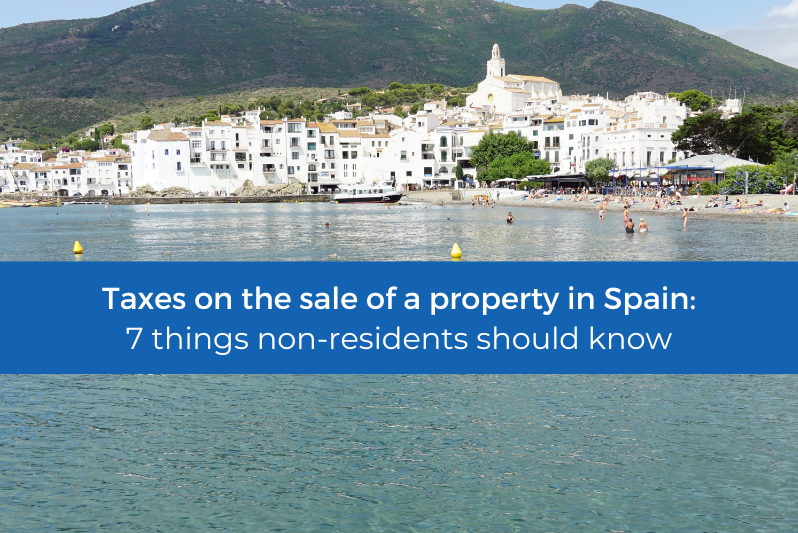7 things non-residents should know about taxes on a property sale in Spain
July 19, 2022

If you recently sold or you are planning to sell a property in Spain, you may wonder whether you’ll have to pay capital gains taxes on money earned from the sale. Today's article talks about the main tax implications of selling a property by non-residents in Spain.
1. The capital gain is subject to the Non-resident Income Tax
Non-resident property owners in Spain must declare any capital gain or loss arising from the sale of their Spanish property through the Non-Resident Tax return (Tax Form 210 “Modelo 210”).
In this regard, all double tax treaties signed by Spain determine that income derived directly from the transfer of real estate located in the Spanish territory (and in most cases also indirectly through companies with a real estate substrate) is always taxable in Spain. Therefore, any potential capital gain derived from a disposal of a property within the Spanish territory will be subject to taxation in Spain.
2. How is the capital gain calculated?
The capital gain is usually the difference between what you paid for your property (acquisition cost) and the amount you got when you sold (selling price).
As a general rule, to determine the capital gain, non-residents can deduct costs of buying, selling or improving their property from the capital gain. Among other costs, estate agents’ and lawyer’s fees, “Plusvalia Municipal” local tax or cost of improvement works (only those that do not qualify as maintenance cost or as an ordinary reparation).
3. A flat rate of 19% is applied
Unlike what happens in the IRPF for resident taxpayers, capital gains are not subject to a progressive scale of 19 to 28% but to a flat rate of 19%. This tax rate is the same for residents in the EU and the European Economic Area as for those residing in non-EU countries.
4. No possibility of offsetting losses from other sales
As there is no tax period, non-residents are not able to offset gains obtained from the sale of property against losses generated by the transfer of another property or any other asset. This is the rule even though they are transferred in the same tax year or on the same day!
5. If the seller is a non-resident, the buyer must withhold 3% from the price.
When a non-resident sells a property located in Spain, the buyer is obliged to withhold 3% of the sale price as payment on account of the non-resident's tax return. The buyer must deposit this amount to the tax authorities within one month using Form 211.
This withholding tax will be offset from the final tax liability to be paid by the seller via Form 210.
If the non-resident taxpayer has made a loss or the tax liability is less than 3%, he/she will have to apply for a refund of the excess.
6. The deadline for filing the tax is 4 months.
The non-resident tax return is self-assessed using Form 210 within three months of the expiry of the period of one month from the sale date (date of accrual) of the real estate property. In other words, 4 months from the sale date.
7. "Plusvalia Municipal", a local tax on the increase in urban land value.
In addition to the non-resident income tax, the sale of the property is subject to the local tax on the Increase in Urban Land Value, better known as "Plusvalia Municipal".
Under article 106 of the Local Tax Law (Royal Legislative Decree 2/2004, of 5 March), the buyer is responsible for depositing the tax due for this local tax provided that the seller is an individual who is not resident in Spain for tax purposes. However, the buyer has the right to claim the amount of tax paid from the seller following article 36, paragraph 3, of the General Tax Law. In practice, this amount is usually withheld from the purchase price along with the 3% withholding tax.